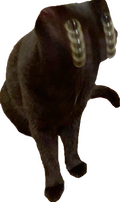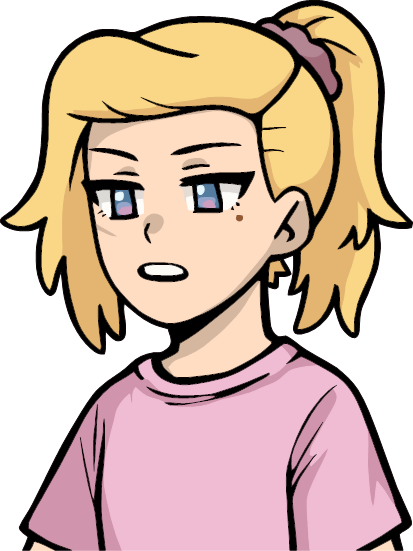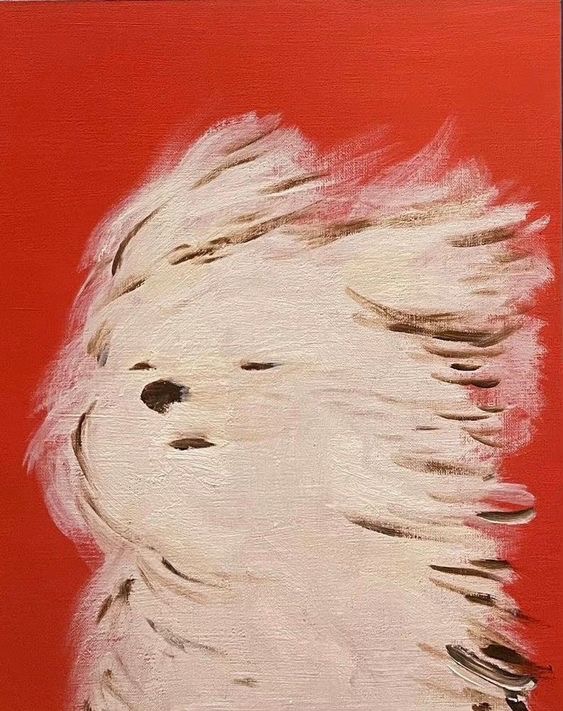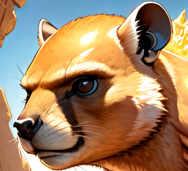The avocado, alligator pear or avocado pear (Persea americana) is an evergreen tree in the laurel family (Lauraceae). It is native to the Americas and was first domesticated in Mesoamerica more than 5,000 years ago. It was prized for its large and unusually oily fruit. The tree likely originated in the highlands bridging south-central Mexico and Guatemala. Avocado trees have a native growth range from Mexico to Costa Rica. Its fruit, sometimes also referred to as an alligator pear or avocado pear, is botanically a large berry containing a single large seed. Sequencing of its genome showed that the evolution of avocados was shaped by polyploidy events and that commercial varieties have a hybrid origin. Avocado trees are partly self-pollinating, and are often propagated through grafting to maintain consistent fruit output. Avocados are presently cultivated in the tropical and Mediterranean climates of many countries. Mexico is the world’s leading producer of avocados as of 2020, supplying nearly 30% of the global harvest in that year.
The fruit of domestic varieties have smooth, buttery, golden-green flesh when ripe. Depending on the cultivar, avocados have green, brown, purplish, or black skin, and may be pear-shaped, egg-shaped, or spherical. For commercial purposes the fruits are picked while unripe and ripened after harvesting. The nutrient density and extremely high fat content of avocado flesh are useful to a variety of cuisines and are often eaten to enrich vegetarian diets.
In major production regions like Chile, Mexico and California the water demands of avocado farms place strain on local resources. Avocado production is also implicated in other externalities, including deforestation and human rights concerns associated with the partial control of their production in Mexico by organized crime. Global warming is expected to result in significant changes to the suitable growing zones for avocados, and place additional pressures on the locales in which they are produced due to heat waves and drought.
Taxonomy and evolution
The genus Persea to which the avocado belongs is considered to have a North American origin, with Persea suggested to have diversified in Central America during the Pleistocene epoch. The modern avocado is thought to have speciated from other Persea during the Pleistocene, estimated at around either 1.3 million or 430,000 years ago. A number of authors, including Connie Barlow in her 2001 book The Ghosts of Evolution, have speculated that the avocado is an “evolutionary anachronism” with megafaunal dispersal syndrome (a concept originally proposed in the 1980s by Paul S. Martin and Daniel H. Janzen[30]), arguing that the avocado likely coevolved dispersal of its large seed by now-extinct megafauna. Barlow proposed that the dispersers included the gomphothere (elephant relative) Cuvieronius, as well as ground sloths, toxodontids, and glyptodonts.
Etymology
The word avocado comes from the Spanish aguacate, which derives from the Nahuatl (Mexican) word āhuacatl [aːˈwakat͡ɬ], which goes back to the proto-Aztecan *pa:wa. In Molina’s Nahuatl dictionary “auacatl” is given also as the translation for compañón “testicle”, and this has been taken up in popular culture where a frequent claim is that testicle was the word’s original meaning. This is not the case, as the original meaning can be reconstructed as “avocado” – rather the word seems to have been used in Nahuatl as a euphemism for “testicle”.
In Central American, Caribbean Spanish-speaking countries, and Spain it is known by the Mexican Spanish name aguacate, while South American Spanish-speaking countries Argentina, Chile, Perú and Uruguay use a Quechua-derived word, palta. The Nahuatl āhuacatl can be compounded with other words, as in ahuacamolli, meaning avocado soup or sauce, from which the Spanish word guacamole derives.
Cultivation
Domestication, leading to genetically distinct cultivars, possibly originated in the Tehuacan Valley in the state of Puebla, Mexico. There is evidence for three possible separate domestications of the avocado, resulting in the currently recognized Guatemalan (quilaoacatl), Mexican (aoacatl) and West Indian (tlacacolaocatl) landraces. The Guatemalan and Mexican and landraces originated in the highlands of those countries, while the West Indian landrace is a lowland variety that ranges from Guatemala, Costa Rica, Colombia, Ecuador to Peru, achieving a wide range through human agency before the arrival of the Europeans. The three separate landraces were most likely to have already intermingled[a] in pre-Columbian America and were described in the Florentine Codex. As a result of artificial selection, the fruit and correspondingly the seeds of cultivated avocados became considerably larger relative to their earlier wild forebears millennia before the Columbian exchange.
The earliest residents of northern coastal Peru were living in temporary camps in an ancient wetland and eating avocados, along with chilies, mollusks, sharks, birds, and sea lions. The oldest discovery of an avocado pit comes from Coxcatlan Cave, dating from around 9,000 to 10,000 years ago. The avocado tree also has a long history of cultivation in Central and South America, likely beginning as early as 5,000 BC. A water jar shaped like an avocado, dating to AD 900, was discovered in the pre-Inca city of Chan Chan.
Production
In 2020, world production of avocados was 8.1 million tonnes, led by Mexico with 30% (2.4 million tonnes) of the total (table). Other major producers were Colombia, Dominican Republic, Peru, and Indonesia, together producing 35% of the world total. Despite market effects of the 2020 COVID-19 pandemic, volume production of avocados in Mexico increased by 40% over 2019 levels.
In 2018, the US Department of Agriculture estimated that 231,028 hectares (570,880 acres) in total were under cultivation for avocado production in Mexico, a 6% increase over the previous year, and that 2 million tonnes would be exported. The Mexican state of Michoacán is the world leader in avocado production, accounting for 80% of all Mexican output. Most Mexican growers produce the Hass variety due to its longer shelf life for shipping and high demand among consumers.
Market
Seventy-six percent of Mexico’s avocado exports go to the United States, with the free trade agreement between the US, Canada and Mexico in July 2020 facilitating avocado shipments within the North American free trade zone.

Culinary
The fruit of horticultural cultivars has a markedly higher fat content than most other fruit, mostly monounsaturated fat, and as such serves as an important staple in the diet of consumers who have limited access to other fatty foods (high-fat meats and fish, dairy products). Having a high smoke point, avocado oil is expensive compared to common salad and cooking oils, and is mostly used for salads or dips.
A ripe avocado yields to gentle pressure when held in the palm of the hand and squeezed. The flesh is prone to enzymatic browning, quickly turning brown after exposure to air. To prevent this, lime or lemon juice can be added to avocados after peeling.
It is used in both savory and sweet dishes, though in many countries not for both. The avocado is common in vegetarian cuisine as a substitute for meats in sandwiches and salads because of its high fat content.
Generally, avocado is served raw, though some cultivars, including the common ‘Hass’, can be cooked for a short time without becoming bitter. The flesh of some avocados may be rendered inedible by heat. Prolonged cooking induces this chemical reaction in all cultivars
It is used as the base for the Mexican dip known as guacamole, as well as a spread on corn tortillas or toast, served with spices. Avocado is a primary ingredient in avocado soup. Avocado slices are frequently added to hamburgers and tortas and is a key ingredient in California rolls and other makizushi (“maki”, or rolled sushi).
Hexbear links
- 🐻Link to all Hexbear comms
- 📀 Come listen to music and Watch movies with your fellow Hexbears nerd, in Cy.tube
- 🔥 Read and talk about a current topics in the News Megathread
- ⚔ Come talk in the New Weekly PoC thread
- ✨ Talk with fellow Trans comrades in the New Weekly Trans thread
- 👊 Share your gains and goals with your comrades in the New Weekly Improvement thread
- 🧡 Disabled comm megathread
reminders:
- 💚 You nerds can join specific comms to see posts about all sorts of topics
- 💙 Hexbear’s algorithm prioritizes comments over upbears
- 💜 Sorting by new you nerd
- 🌈 If you ever want to make your own megathread, you can reserve a spot here nerd
- 🐶 Join the unofficial Hexbear-adjacent Mastodon instance toots.matapacos.dog
Links To Resources (Aid and Theory):
Aid:
Theory:
 Nerds sadly due to the Trump tariffs, you are going to have to comment on the general megathread 25% more than normal
Nerds sadly due to the Trump tariffs, you are going to have to comment on the general megathread 25% more than normalI am asked so much of, yet still I serve
On your feet comrade, we are posting
 :
:

Bill Belichick voice: “Do. Your. Job. Your job is POSTING.”


Just spread out your normal
Comments over twice the comments. You’ll easily hit the 25%
I
Gotcha


Smh, trumpism on full display by the HEXbear TANKIES

This has nothing to do with Tito’s Yugoslavia having close relationship with African states, it’s actually due to the Nico and Little Jacob friendship arc in GTAIV


Great work, American left

Date brought a weed vape and is a hardcore unionist. It’s over for me it’s gonna be permanent touching grass sorry megathread my heart belongs to another
Civ 7 is launching for $70 with $60 of DLC on the first day lol

Ugh this guy looked so cute petting my cat and all I could think was just, I should be petting him like that

Lol. Lmao
I have a date tomorrow. First first date in years :agony: pray for me
There’s a real chance that you could have f*n if you stay curious, silly, and authentic. The other big chance is that it’s a little uncomfortable and you say goodbye. Both perfectly fine options.
I don’t get nationalists generally, but some forms of nationalism are especially baffling. What do you mean you’re an Estonian nationalist? It’s a country of a million people. You gotta define yourself by something more meaningful than your association to a state with the population of a mid sized city. Like having your identity centered around a CFL team makes more sense than that.

We were WAY better at being racist than the new guy! 😤😡
Something perverse about pension funds being heavily invested in the market. Becoming one of the lucky few to get a pension means you depend on the exploitation of your fellow workers to make the math work out.
I do feel bad knowing how quickly things are going to shit for Americans, somehow even more than they were. but, it is really kinda funny watching the US blow its entire leg off killing all soft power to own the libs. how long before he just calls in all US dollars held in foreign reserves or some dumb shit, idk! but it’ll be kinda funny when he does!
why is there just a straight up pedophile on lemmygrad
call me old fashioned but, keep it to yourself not everything needs to be posted online. i don’t care that you don’t act on it you can just like not tell people then
Fed bait to draw in other pedophiles maybe? But yeah, gross.
Looks like it was removed thankfully, but yikes. Feels like that account should be banned too.
Do you mind please summarizing what happened?
pedophile made an effortpost talking about using the term MAPs unironically in big 2025, filled with leftist language etc that basically said “no pls don’t make fun of pedophiles it’s reactionary and will make me kill myself!!!” and that the guy was apparently on a pedophile message board but we’d NEVER EVER FUCK CHILDREN I PROMISE. just really gross and annoying.
I replied to it but deleted it (i just said “downvote” but I remembered lemmygrad actually has downvotes so it’d look stupid) but I think the deleted comment still appears on my profile if you want to go to the post.
The only good part of that post, which I agreed with, is when they suggested that left-handed people be as vilified, hated, and hunted in society as pedophiles. I’ll never accept you left-handed freaks.
Seriously, what the fuck is that post still doing up. That is so unacceptable, I can’t believe I read that.
Seriously, what the fuck is that post still doing up
It’s removed but I guess the text of it is still there if you have a link, probably just how the site works
Sounds like a post a chud would make trying to bait leftists into defending them by dressing it in progressive language then feeling smug about it.
And happens to identify as trans.
Just seems like wrecker fedposting.
The weird thing is they were apparently a user for 3 years and I guess just decided to drop the “I’m a pedophile” nuke without expecting to be instantly banned
What the fuck?
I feel like I’m losing the ability to speak to people in real life. It’s not a terminally online thing. It’s literally the ability to synthesize sentences. I picked something up at a corner store on my way home from work tonight and the clerk said something to me and I was just completely stunlocked. I just spent 12 hours out of the house doing work listening to podcasts.
yeah, I always feel that way too. Probably something to do with spending 90% of my life staring at the magical glowing dopamine screen (alone), and Depression.
i unironically feel this way about games, and probably podcasts too. conversations are something that happen when you click on a dialog option, or press the play button. you don’t have to say anything.
If i had any job other than trades where I’m forced to interact with people and do physical activity; I’m pretty sure I’d be little more than a pile of flesh piloting a computer





















